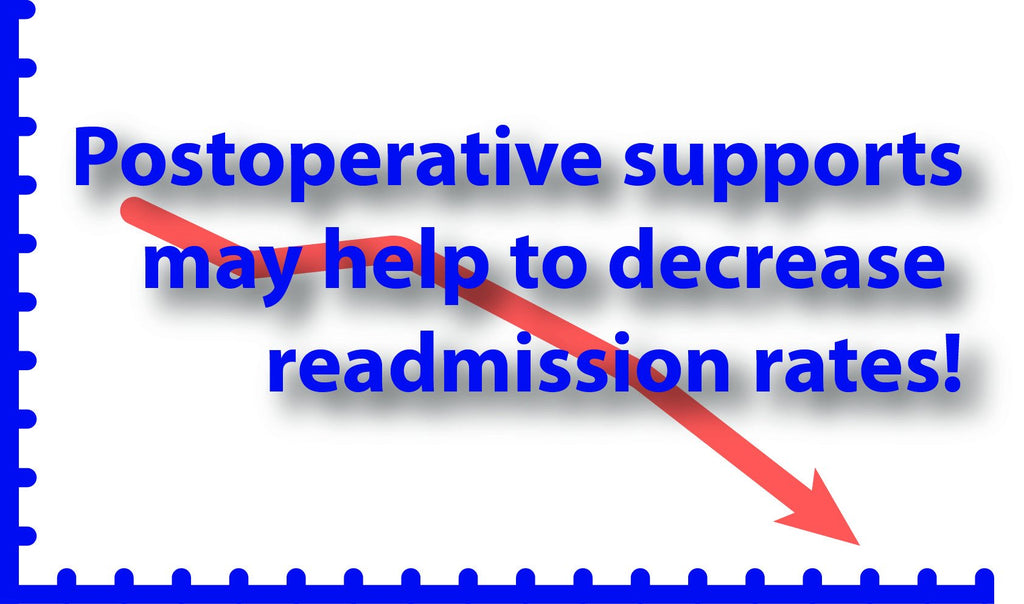Readmission rates are a severe issue. Medicare reports that 18% of patients discharged from the hospital have a readmission within 30 days [1] and cardiac patients are consistently reported to have the highest rates. In a systemic review of 92 studies conducted in Europe, USA and Canada, Fredericks and DaSilva [2] found the readmission rate was 16% for Coronary Artery Bypass Graft (CABG) patients.
Such high readmission rates have severe consequences for health care providers and health care costs. In the USA Medicare penalizes hospitals by paying less if readmission rates are high in the first 30 days after surgery, - and the rates are reported publicly.
Health care teams are most likely very interested in making sure their patients get the help they need so they don't come back, and an increasing number of studies focus on how to decrease readmission rates. One such study by Nabagiez et al. [3] showed how home visits by a Physicians Assistant (PA) resulted in patients were 41% less likely to be readmitted to the hospital within 30 days when compared to a control group who did not receive home visits.
Other studies have demonstrated how additional attention to patients after discharge such as comprehensive discharge planning, telephone and/or home follow-up by staff could decrease readmission rates e.g. Naylor/McCauley and Bostrum et al. [4, 5] just to mention a few.
Iribarne et al. examined 10 hospitals in US and Canada and found the readmission rate of 5059 cardiac patients was 18.7% within 30 days [6]. The reason was infection-related for 58%. The authors pointed out that such infections may be preventable and addressed through quality improvement initiatives and called attention to a national focus on process of care measures and bundling strategies to prevent post-operative infections.
Most infection prevention strategies will more than pay for themselves by saving the medical costs associated with cure of infections.
QualiBreath and QualiBra Advanced can help relieve many of these symptoms, stabilise and protect the sternum to decrease risk of infections, and simply make the patients feel more comfortable and secure in the postoperative period. [8]
QualiBreath and QualiBra Advanced are both designed to decrease complications and to make patients more comfortable in the postoperative recovery period. The aim is to decrease sternal infections by the constant lateral support on the sternum and by protecting the internal surgical closure from the outside. Our sternal supports also aim to decrease pain by supporting the sore ribs and respiratory muscles, which provides the supplementary benefit of enhancing deep breathing.
The psychological effect of these devices is difficult measure, nonetheless when patients feel more comfortable, more secure and get a constant sense of being held firmly together, it could have a significant positive influence on patient's wellbeing, particularly once they are out of the hospital and far away from caring hospital staff.
These are all benefits that have the potential to decrease readmission rates and related costs for the health care system.
The use of external wound supports is still not an integral part of discharge planning for cardiac patients. The effect on readmission rates should be investigated.
Leave a comment below to let us know your opinion. Do you use external chest supports on your cardiac patients?
References:
3. Nabagiez JP et al. Cost Analysis of a Physician Assistant Home Visit Program to Reduce Readmissions Following Cardiac Surgery. Presented at STS 2016. (page 142)
4. Naylor MD, McCauley KM. The effects of a discharge planning and home follow-up intervention on elders hospitalized with common medical and surgical cardiac conditions. J Cardiovasc Nurs. 1999; 14: 44-54.



Leave a comment: